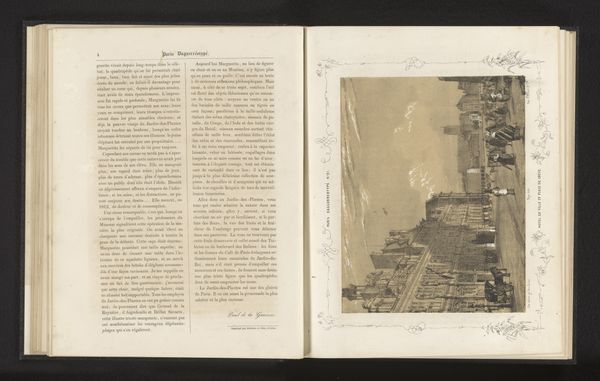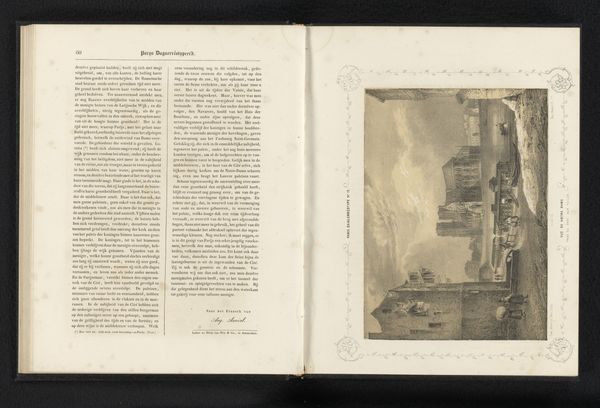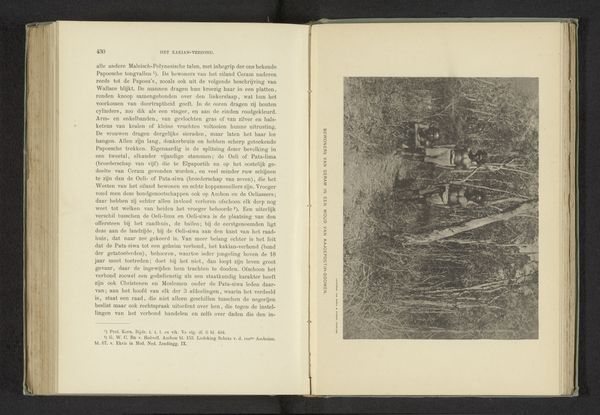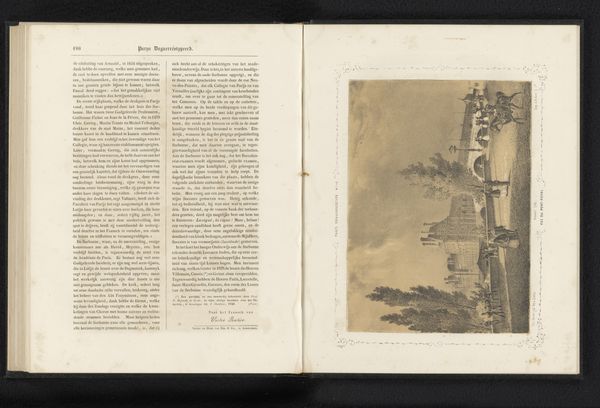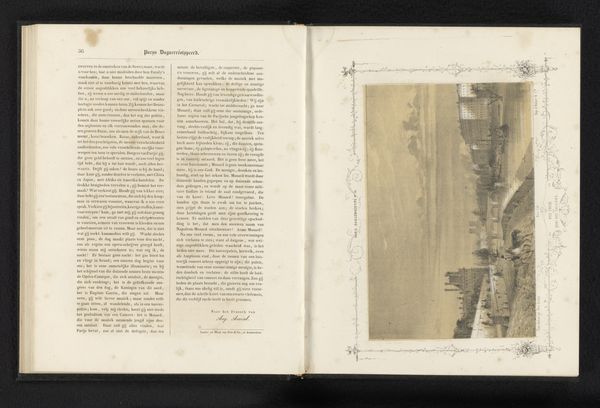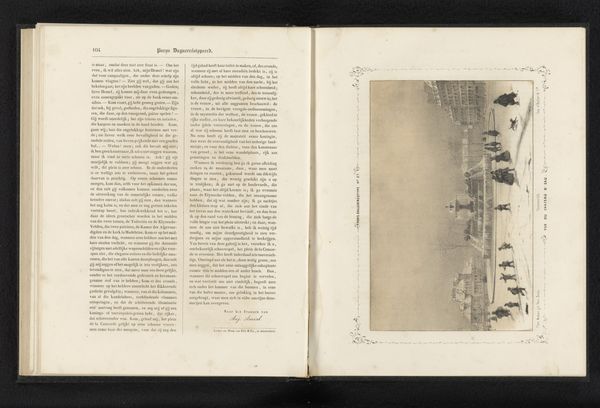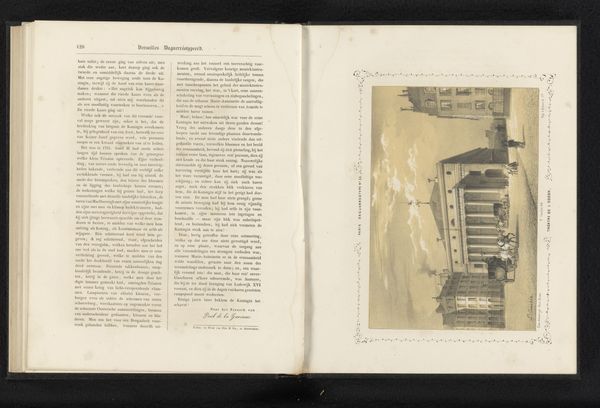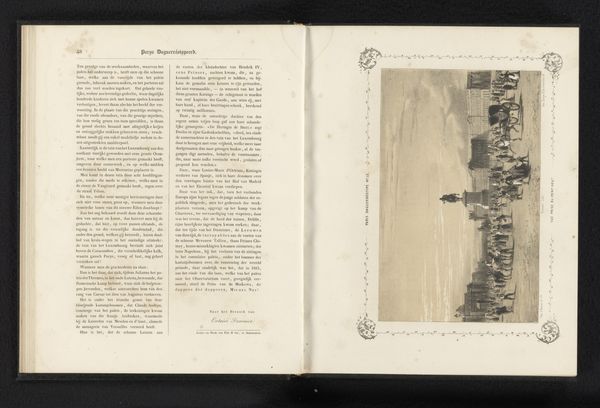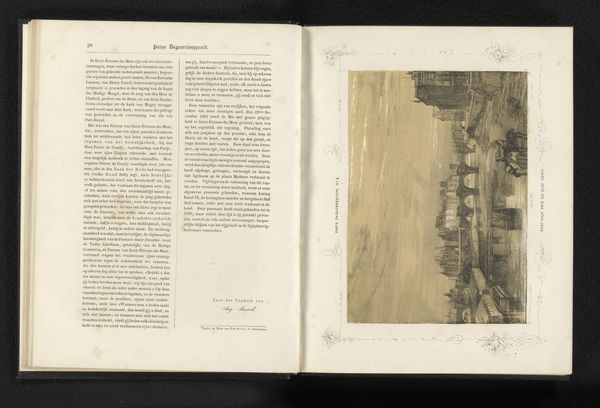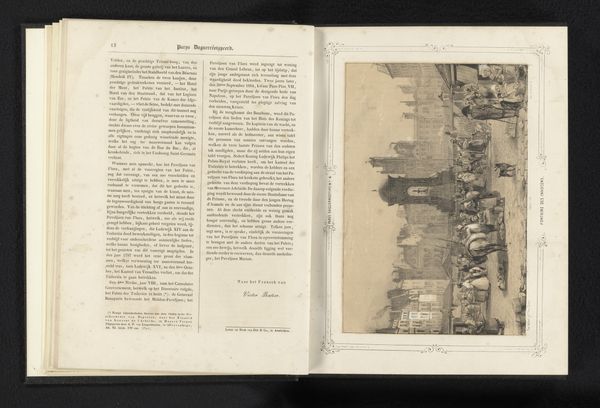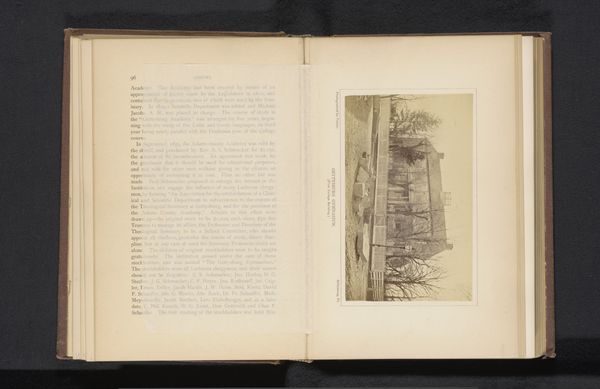
print, engraving, architecture
# print
#
romanticism
#
cityscape
#
engraving
#
architecture
Dimensions: height 210 mm, width 260 mm
Copyright: Rijks Museum: Open Domain
Editor: So, here we have A. Provost's engraving, *Hôtel de Cluny,* created before 1840. The architecture dominates the foreground; I find it really impressive how solid and present it feels, even in print. What stands out to you when you look at this? Curator: It whispers of stories, doesn't it? Not just of stones and mortar, but of the lives lived within. Look at how the light plays on the facade, suggesting hidden chambers, clandestine meetings, whispered secrets carried on the wind. It feels romantic in that very melancholic, world-weary way. Do you sense that too, that feeling of looking back at something grand and maybe just a bit...lost? Editor: I do see that now. The Romanticism tag makes a lot of sense, especially with how the figures almost disappear compared to the architecture. Does this building have much significance within France? Curator: Oh, absolutely. The Hôtel de Cluny, a former medieval mansion, stands as a symbol of the rich cultural tapestry that is Paris. See the way the engraver uses light and shadow, to turn a stone building into something more mysterious? You could imagine it becoming a gothic romance novel. But beyond pure fantasy, that image also offers an important historical record. Provost gives us more than a likeness, he is preserving something, like an artist documenting a vanishing landscape. Editor: So it's both a romantic vision and a historical document. I never considered that. Thanks! Curator: Isn’t it marvelous how art lets us be time travelers, if only for a fleeting moment? My pleasure!
Comments
No comments
Be the first to comment and join the conversation on the ultimate creative platform.
